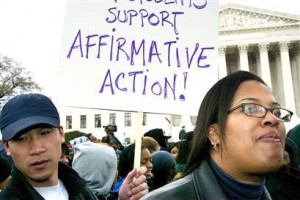 Affirmative Action policies and programs have been widely adopted and embraced globally as a means “to promote actions that achieve non-discrimination.”
Affirmative Action policies and programs have been widely adopted and embraced globally as a means “to promote actions that achieve non-discrimination.”
The outcomes and benefits of affirmative action are only seen over longer periods of time, and the implementation isn’t always precise. Yet, the overall outcome is beneficial.
The principles of affirmative action have yet to be applied to the justice system in the Unite States. According to a Stanford University statement, affirmative action is defined as:
“policies that take factors including ‘race, color, religion, sex, or national origin’ into consideration in order to benefit an underrepresented group ‘in areas of employment, education, and business.”
Affirmative action applied to the workplace and elsewhere attempts to achieve equitable and equal access to opportunities where, for example, the demographic makeup of a local community is similar to those who are receiving higher education and/or enjoying higher paying employment opportunities.
However, the justice system in the United States is indisputably not representative of the national ethnic landscape. It is disproportionately having a negative impact on people of color. Some suggest this is a result of the justice system being racially biased. Others suggest that other factors, such as limited access to basic resources (education and jobs), contribute to the racial imbalance seen in the justice system.
Regardless of the causes, it would be reasonable to apply affirmative action practices to the justice system. This would correct for the present imbalance (which also perpetuates and makes circumstances worse).
For example, a local community where only 5% of the population are represented by people of color would be required to not have a population of incarcerated inmates higher than 5% for people of color. This can be achieved by applying lesser penalties and shorter jail terms to people of color. This is not to say people of color who commit crimes are any less guilty. It is to adjust for the negative long-term impact that incarceration can have, and also compensate for the factors that may result in breaking the law.
If the above practice was adopted, we would see a 50% decline in incarceration. That’s 1.1 million people no longer incarcerated.[1]
__________
Footnotes
[1] According to Unlocking America and the NAACP, “if African American and Hispanics were incarcerated at the same rates of whites, today’s prison and jail populations would decline by approximately 50%.” [source]